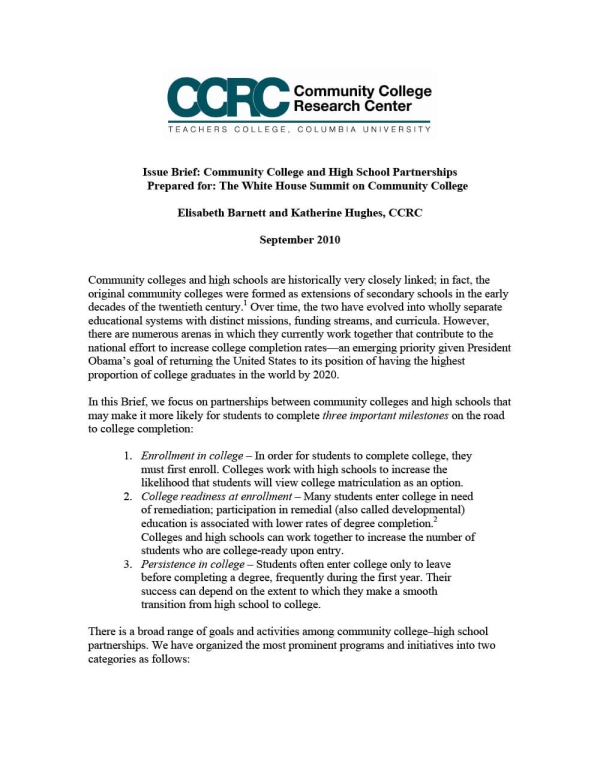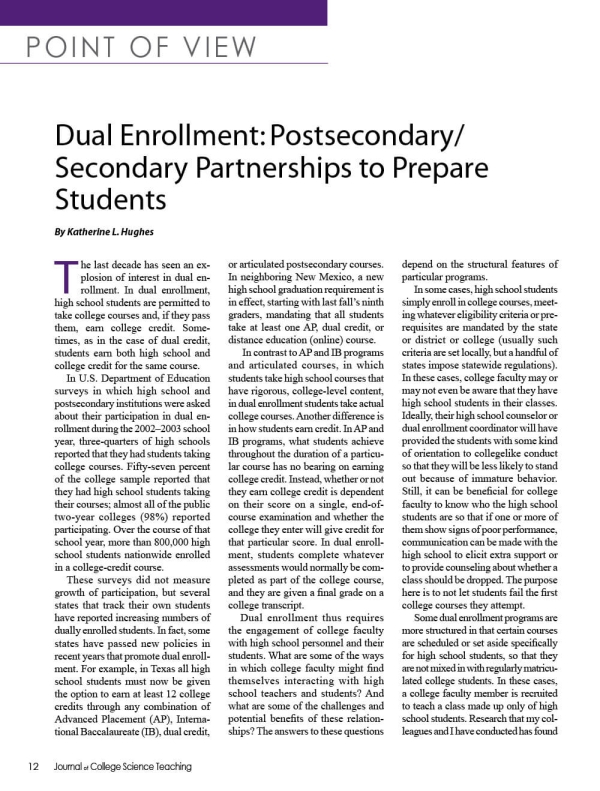Different Approaches to Dual Enrollment: Understanding Program Features and Their Implications

This report discusses eight secondary-postsecondary partnerships in California that sought to integrate dual enrollment with a career-focused strategy for engaging struggling students.
Dual Enrollment for High School Students

This how-to guide provides information for practitioners, schools, and districts on how to incorporate college coursework into high school academies and pathways.
Community College and High School Partnerships

Prepared for the 2010 White House Summit on Community College, this brief discusses partnerships that promote college enrollment, college readiness, and postsecondary persistence.
Dual Enrollment: Postsecondary/Secondary Partnerships to Prepare Students

This article describes some of the ways in which dual enrollment requires the engagement of college faculty with high school personnel and their students, and it reviews the challenges and potential benefits of these relationships.
Student Participation and Performance on Advanced Placement Exams: Do State-Sponsored Incentives Make a Difference?
Based on analysis of nationally representative AP exam data taken from the Education Longitudinal Study of 2002, this article examines whether incentives provided to students, teachers, and schools help students enroll and succeed in AP exams.
